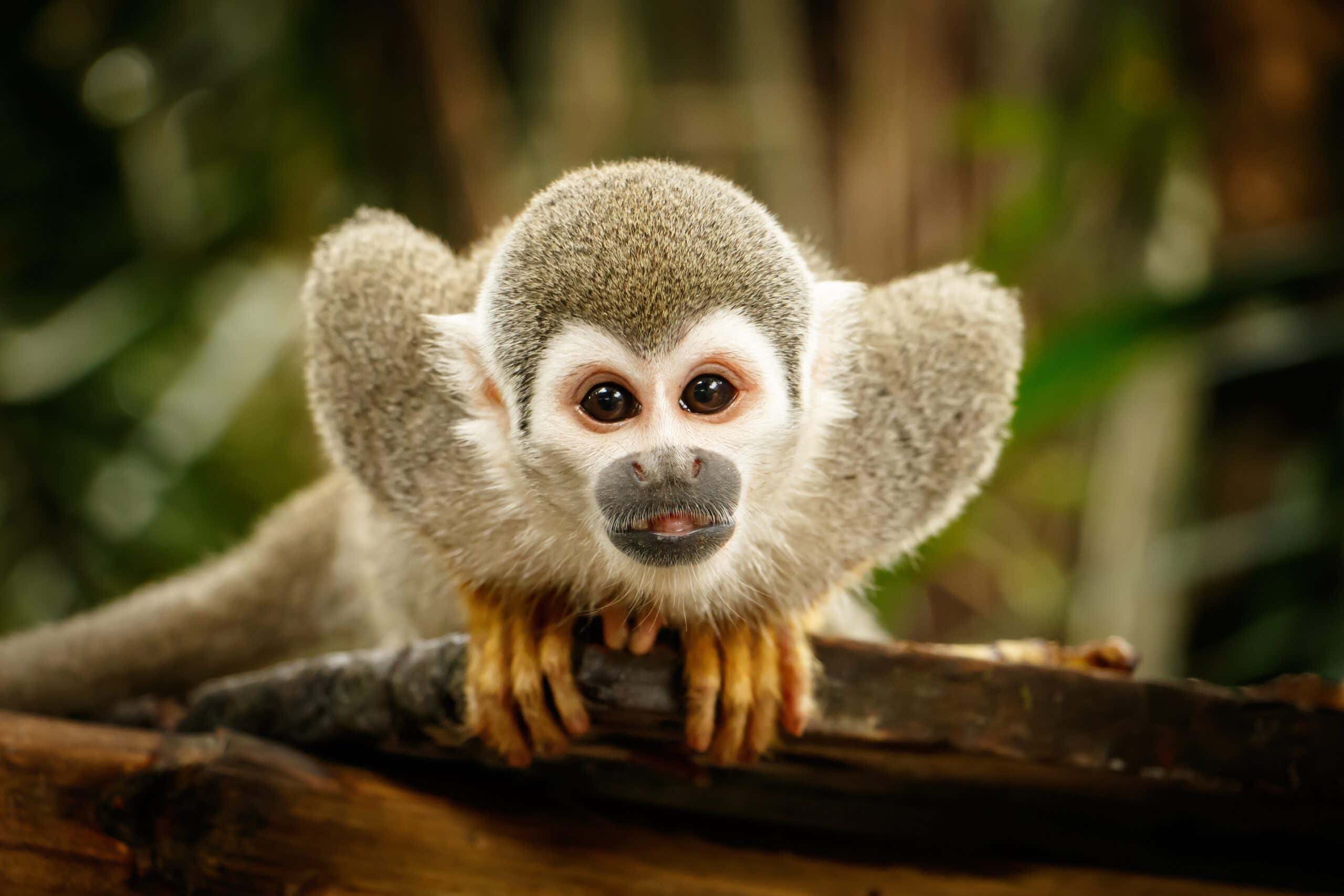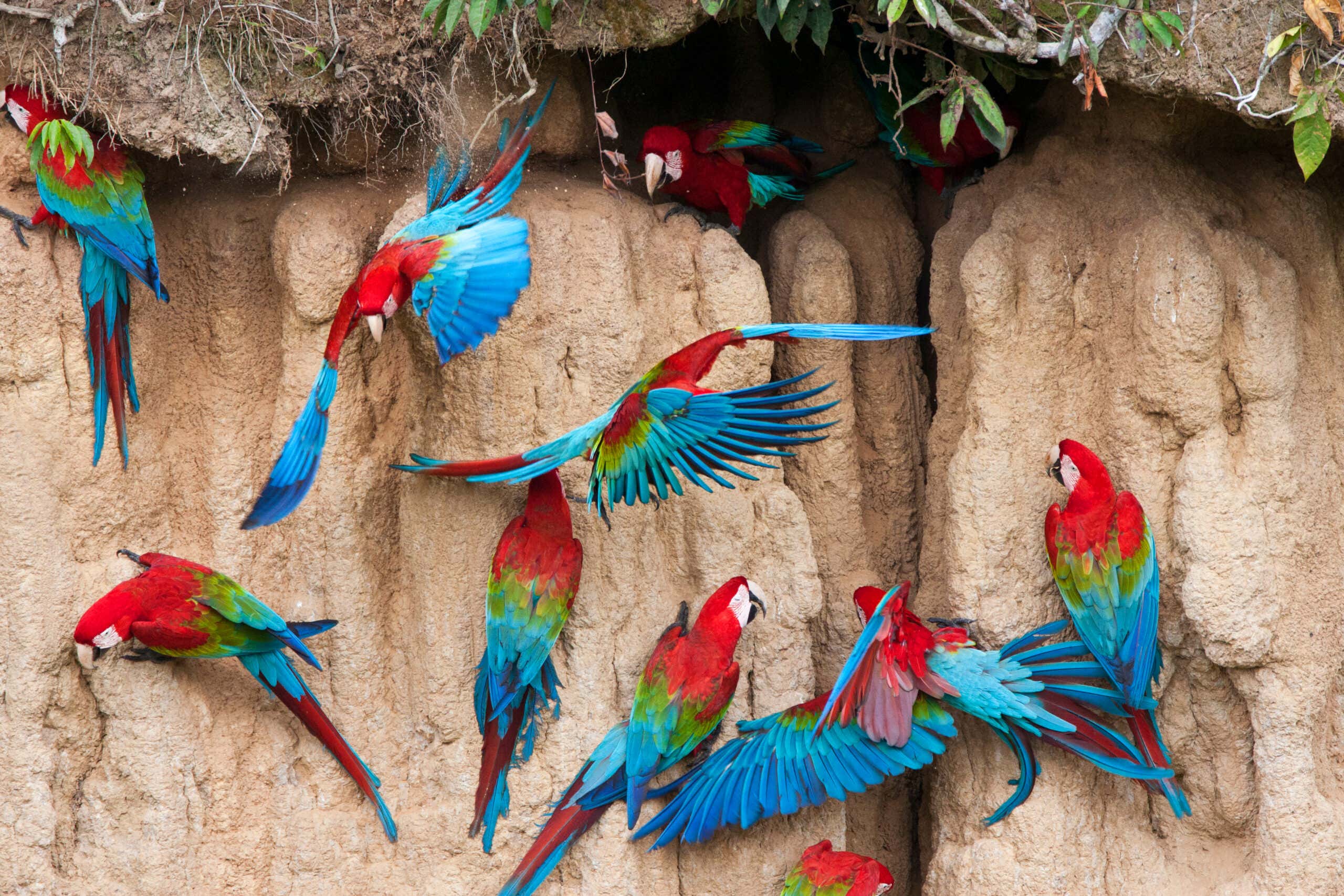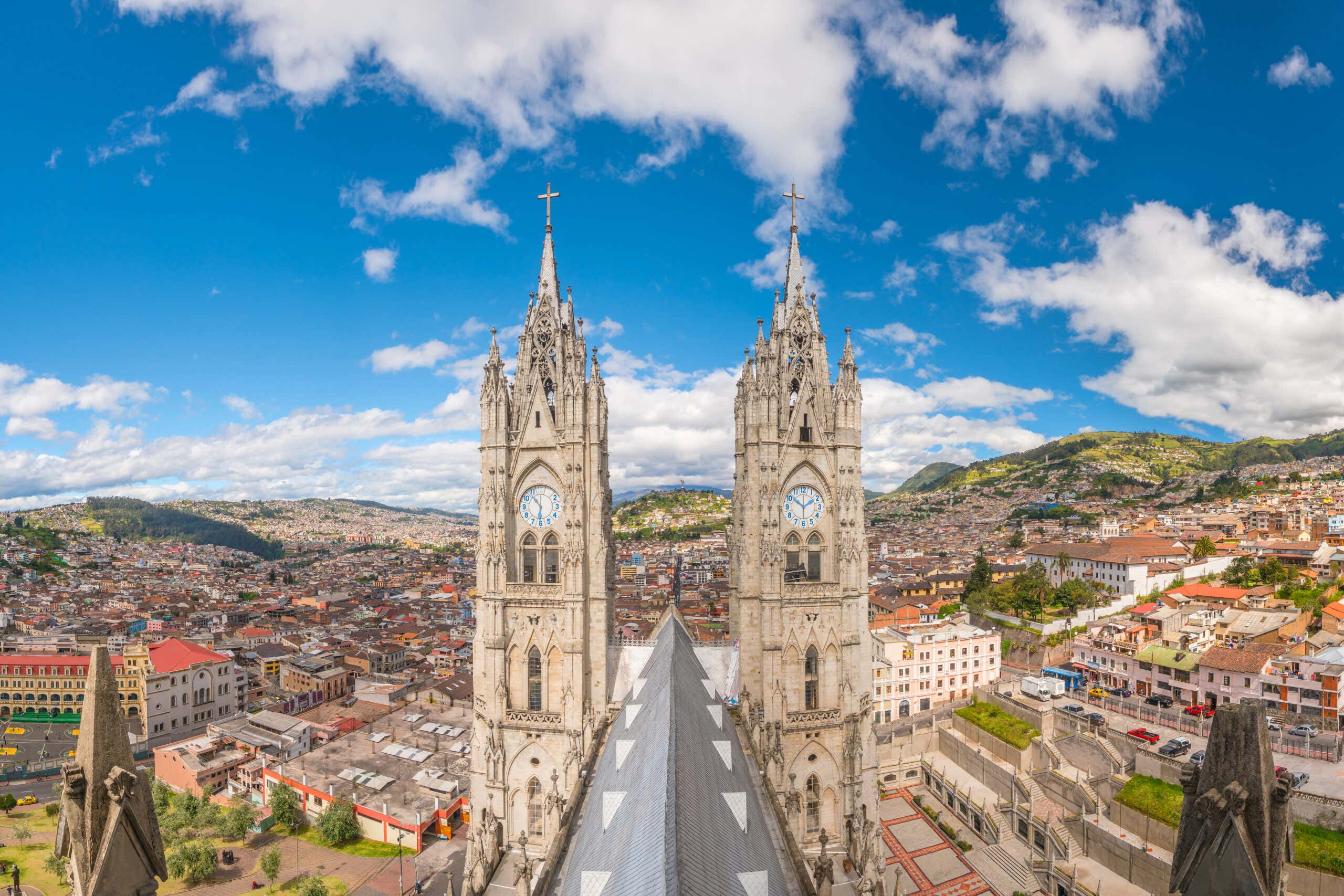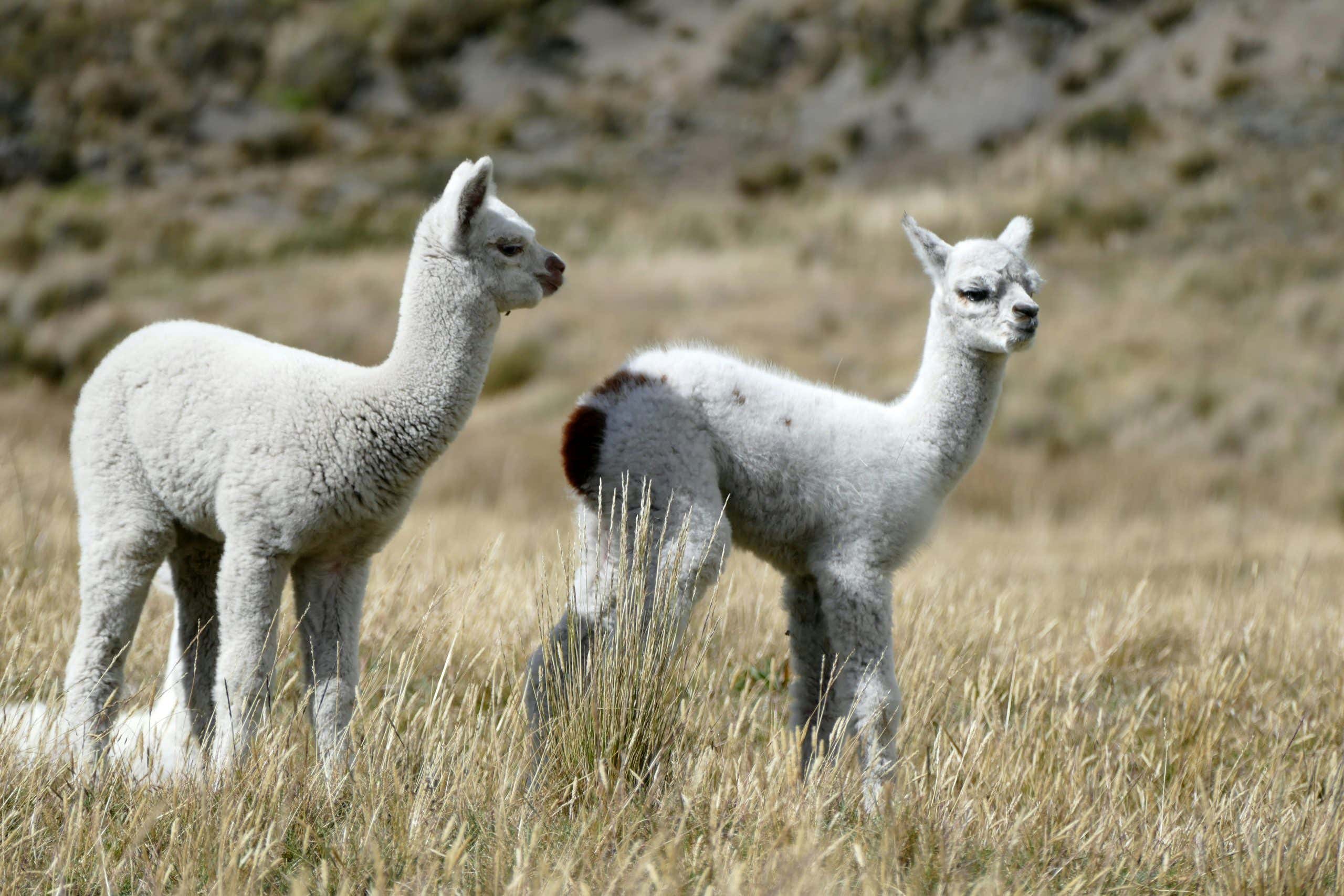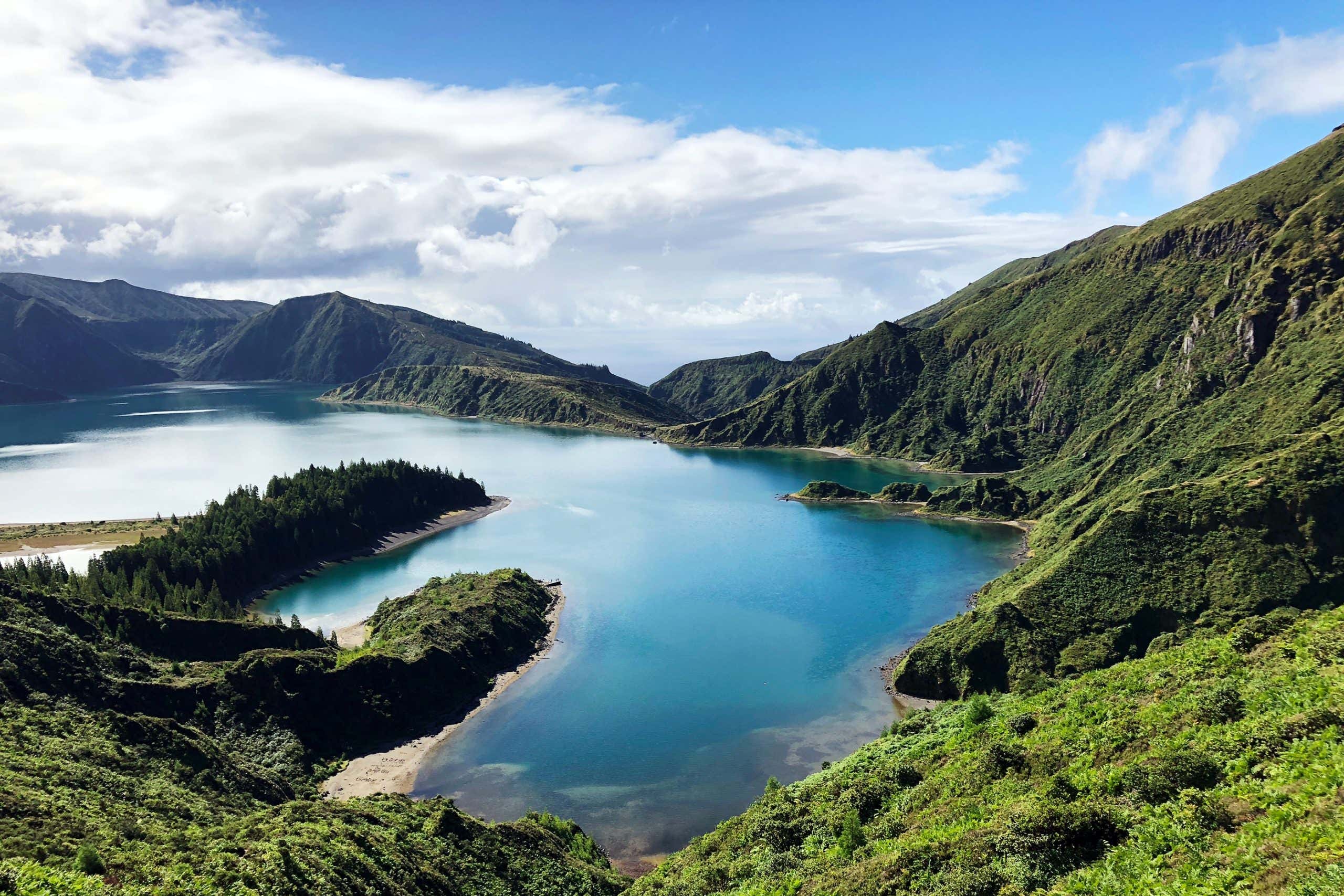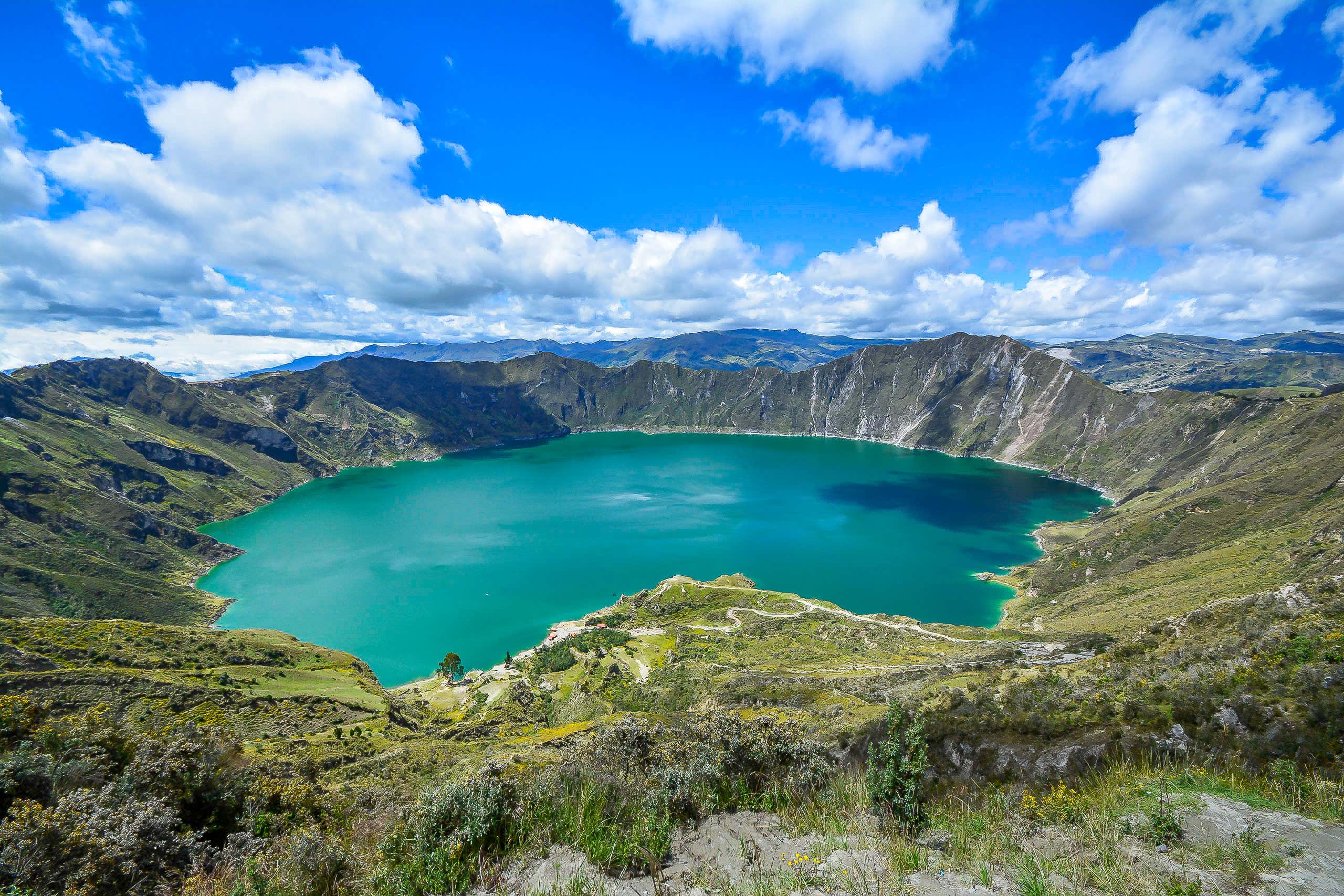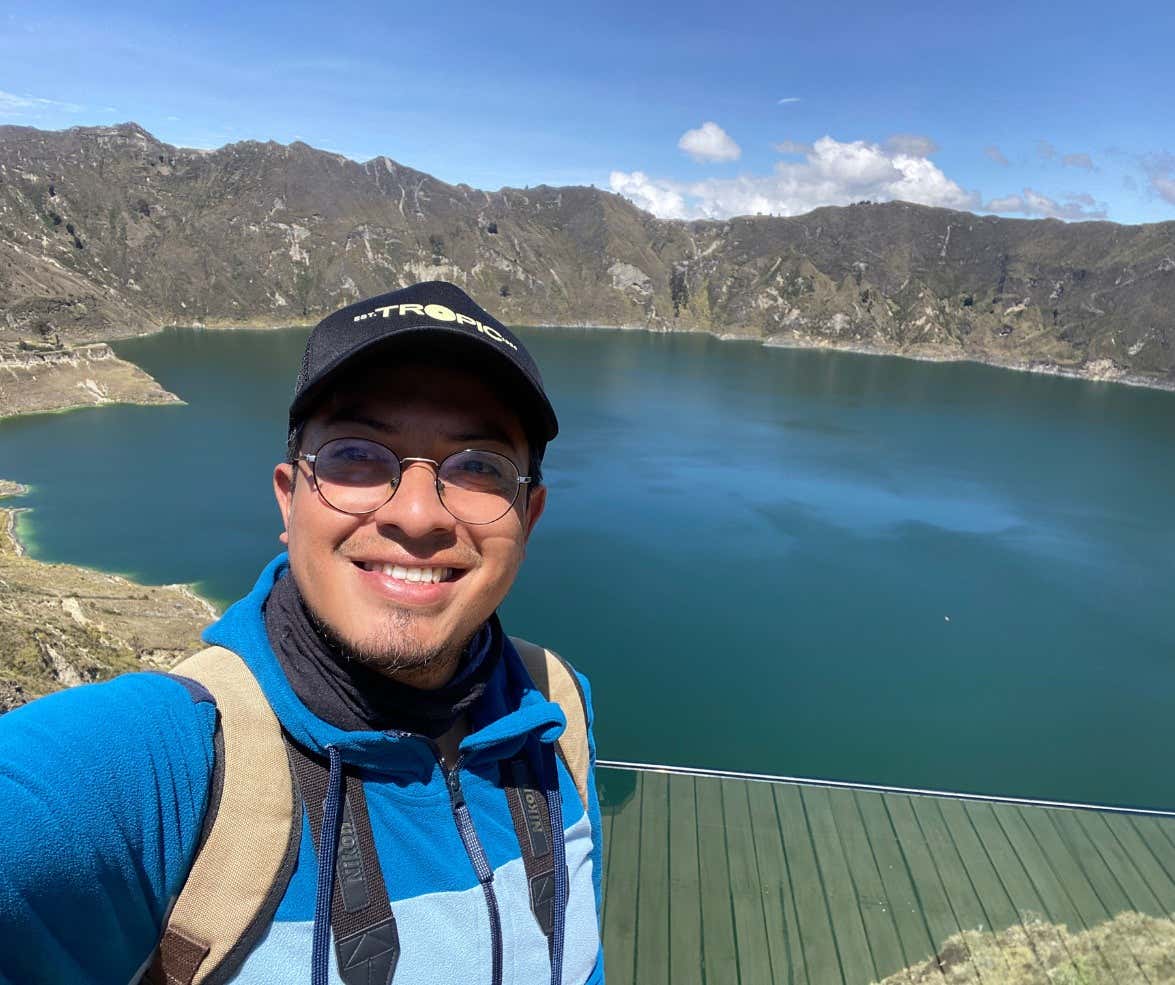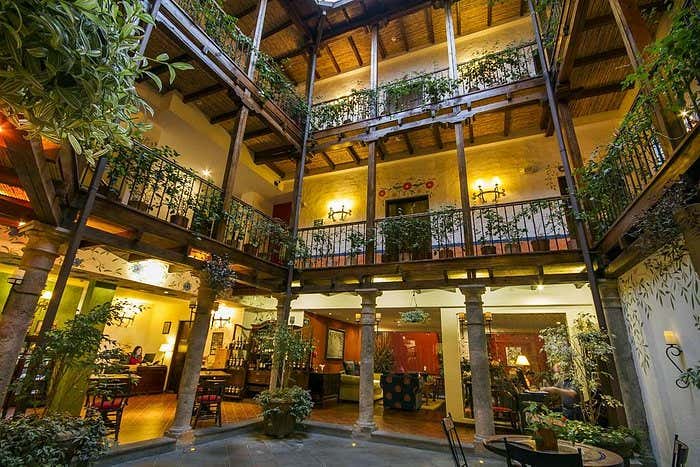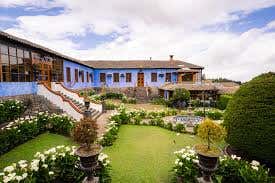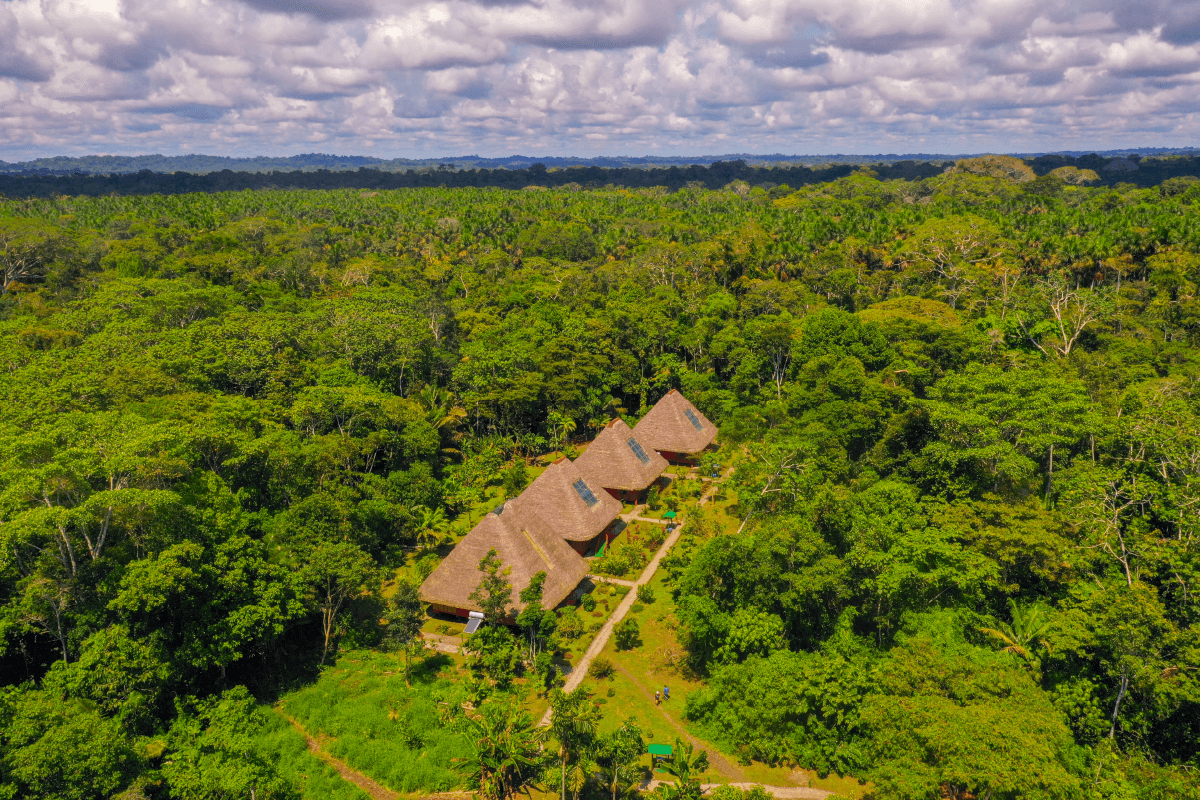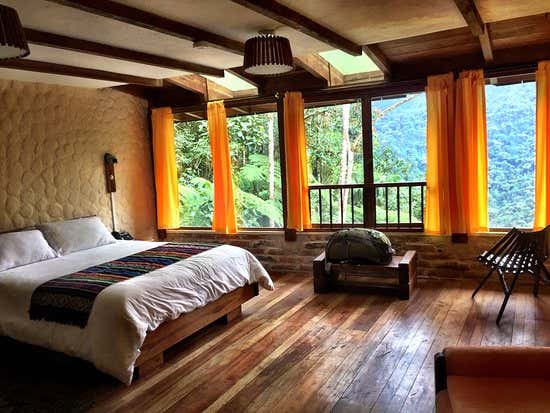In the footsteps of Alexander von Humboldt: Ecuador
21 July 2025 - 8 days - sold out
14 August 2026 - 11 days for £4,850 per person
Embark on a journey of discovery and adventure, following in the footsteps of explorer and naturalist Alexander von Humboldt. Retrace part of his groundbreaking 1802 expedition through Ecuador’s Avenue of the Volcanoes and on to the Amazon and the Cloud Forest, regions that helped to establish his "unity of nature" theory.
Alexander von Humboldt was a geographer, explorer and naturalist. Some consider him to be the first ecologist. He altered the way that scientists see the natural world by finding interconnections. He was ahead of the curve on understanding environmental problems such as deforestation and its effect on climate. He was a key influence on Charles Darwin and his modern thinking of evolutionary biology.
This tour will follow part of Humboldt’s 1802 exploration of Latin America and offers an amazing opportunity to explore some of Ecuador’s most fascinating natural destinations – the Pacific cloudforests to the west of Quito – and to travel through what Humboldt dubbed the "Avenue of the Volcanoes". Visit a long section of the Pan-American highway where the Andes meets the equator, and where beautiful vistas of snow-capped volcanoes, crystal clear lagoons and lush green valleys can be enjoyed in abundance.
There will also be the opportunity to discover Ecuador’s stunning architecture, bustling, colourful markets and fascinating cultural history, found throughout beautiful Andean villages, the city of Quito and the small, artisan town of Otavalo.
In 2026, we are expanding this expedition to include an in-depth exploration of the Ecuadorian Amazon, one of the most biodiverse ecosystems on the planet. This vast tropical rainforest, part of the greater Amazon Basin, is home to an extraordinary concentration of species, including over 600 bird species, 200 mammal species, and tens of thousands of plant varieties, many of which are still being studied by scientists.
This immersive expedition offers a rare opportunity to experience nature as an explorer, uncovering the scientific significance of these landscapes while embracing the spirit of discovery that shaped our understanding of the natural world.
Ecuador is also known as the gateway to the Galapagos Islands, and we have timed this tour to coincide with our Galapagos cruise for those wanting to experience the ultimate trip of a lifetime.
In partnership with Latin Routes.
DAY 1: QUITO ARRIVAL
You will be met on arrival into Quito and transferred to your hotel which is located in the heart of the historic centre.
Quito is the capital city of Ecuador and sits at an elevation of 2,850 m. It is located in the Guayllabamba river basin, on the eastern slopes of Pichincha, an active stratovolcano in the Andes mountains. The historic centre of Quito has Quito was one of the first World Cultural Heritage Sites declared by UNESCO in 1978. There are about 130 monumental buildings in the centre. Some of the most famous include Carondelet Palace (the seat of the government), Basilica del Voto Nacional, Quito Cathedral and the Church of el Sagrario.
You will have time to settle into your hotel before the welcome meeting in the evening, which will be held at your hotel. During the meeting you will meet with your Tour Leader and the rest of the group before setting off for a welcome dinner in Quito’s old city.
DAY 2: QUITO TO OTAVALO AND COTACAHI-CAYAPAS ECOLOGICAL RESERVE
In the morning, depart your hotel and will visit the Quitsato Sundial located on the equatorial line. Quitsato is the first and the only equatorial monument celebrating the middle of the world, at Latitude 0°0’0”, and boasts that it can be observed from space, due to the dark stones absorbing more heat than the lighter, reflective ones. The name ‘Quitsato’ itself comes from the pre-Incan Ecuadorian coastal language, Tsafiqui, and means ‘middle of the world’. Whilst here, you will learn about the astronomical knowledge of the region’s pre-Hispanic cultures.
From here, head to the town of Otavalo, this is truly one of the most interesting towns in Ecuador, where the local Kichwa indigenous culture is not only plainly visible but on the rise. The town´s famous craft market is filled with interesting colourful and sometimes rare objects and crafts, and has been an economic and social centre for more than 4000 years.
As part of your day at the market, you will visit the workshop of master weaver Miguel Andrango, in the village of Agato. In the small store in the courtyard of his Tawantinsuyo workshop, the walls are covered with bright designs, most with an indigenous motif; the designs are based on Inca patterns but are the work of Miguel and his family. The workshop uses only pure wool and Alpaca; the weaver’s card and spin it themselves and then dye it with natural inks made from mosses (for yellow) or seeds such as ‘Achiote’ (for red). There will be an opportunity for free time to explore the market at your on leisure.
In the afternoon you journey to the Cotacachi-Cayapas Ecological Reserve for a visit to the interpretation centre and take a hike to view the outstanding Cuicocha lagoon, a deep-blue crater lake on the lower southern flanks of Cotacachi Volcano.
Cotacachi-Cayapas Ecological Reserve spreads over 752,235 acres, extending from Imbabura - in the Ecuadorian Andes mountains to the western edge of the rainforest in the Esmeraldas. Inside the reserve there are three volcanoes: Yanahurco, Cotacachi, and Cuicocha. The main highlight is the Cuicocha Lagoon. Cuicocha is a volcanic crater with brilliant and colourful water. Cotacachi-Cayapas Reserve homes more than 100 species of mammals such as spider and howler monkeys. Cotacachi-Cayapas is a bird's paradise, as well. The reserve homes more than 600 species of birds.
After your hike, you will stop at the picturesque colonial town of Cotacachi, famous for its leatherwork, before returning to Quito.
DAY 3: EXPLORE QUITO
This morning you will visit Mitad del Mundo, where a monument marks the equator line. You'll also visit the Intinan Museum, known as the Museum of Equinoctial Solar Culture, where you will learn about the history of Ecuadorian ancestral peoples and you can carry out various experiments to demonstrate that you are on the true equator. From here, you will journey to eastern Quito where you will board the highest cable car in South America. Begin your adventure at 2950m to reach about 4050m of altitude at the top of Cruz Loma Hill, close to Pichincha Volcano towering over the Ecuadorian capital. Once you reach the summit, weather permitting, you will enjoy fantastic views of Quito and the surrounding area, you will be able to spot some of the main mountains and volcanoes adorning the surrounds of the city including Coyambe, Antisana, Pasochoa and of course the most famous of all, Cotopaxi!
From here, explore historic Quito. Walk through the Main Plaza, where you will see the Government Palace, La Compañía, and some of the most important churches built around the 16th and 17th centuries, including the San Francisco Monastery which was started five days after the founding of the city in 1534. Visit the city’s famous La Ronda street, where you will learn about traditional work in colonial Quito. Your final stop is the ‘Panecillo’, the hill that dominates the south of the city, and where you can admire the famous statue of ‘Our Lady of the Panecillo’ and enjoy spectacular views of Quito.
DAY 4: QUITO TO AVENUE OF VOLCANOES
Departing Quito after breakfast, you will journey along the Avenue of the Volcanoes. When the Nazca and South America tectonic plates collided 100 million years ago, it gave rise to the backbone of South America – the Andes. This geological collision also produced a secondary mountain chain within Ecuador’s Andes, the Cordilleras. The result of which was dozens of lofty volcanoes, several of which remain active. When German naturalist Alexander von Humboldt visited the valley between the two ranges at the beginning of the 19th century, he coined it “The Avenue of Volcanoes”. Here you will have the opportunity to enjoy fantastic views of the Ecuadorian Andes.
Visit Cotopaxi National Park where weather permitting you will be able to see the snowcapped summits of the Cotopaxi and Antisana volcanoes. The predominant ecosystem in the park is moorland, with its own unique flora and fauna. Vegetation is principally scrub and small, low shrubs. You will also visit the Interpretation Center to learn about the history of this spectacular volcano’s major eruptions, as well as the local flora and fauna, and visit Lake Limpiopungo and explore the surrounding area on foot.
If you feel like a longer walk, a two-hour hike will take you to Mt. Cotopaxi’s J. Ribas refuge (4,800 m) where you will be able to enjoy spectacular views of the volcano and the surrounding Andean peaks.
After lunch, you will travel to Chimborazo Reserve, an area of 58,560 hectares, home to a large population of vicuñas reintroduced from Peru and Chile in 1988. There are also llamas and alpacas, native domestic animals which were used by the ancient inhabitants of the Andes before the Spanish introduced horses, sheep, cows, and donkeys. The reserve was created to protect these animals and their historical legacy as well as the land of which they are part. Chimborazo Reserve has moorland, trees and bushes of rosemary, mortiño, chuquiraguas (climber flower), appendage, sacha chocho, valerian; there are also quishuares (shrubs that grow and develop at altitudes over 2800 meters), pumamaquis, peppers, small shrubs and Stipa, Calamagrostis and fescue, as well as other endemic species from the Andes.
In the eroded areas, where crop out Cangahua (hardened sterile layer, located in the pyroclastic volcanic old rocks), the dominant vegetation is xerophytic scrubland (plants adapted to arid conditions where water is
limited. These plants have adapted, in different magnitudes, to absorb, hold, or prevent the loss of water. Another characteristic species of the region is the capulí, an endemic tree of Ecuador with small, round, and red fruits.
DAY 5: RIOBAMBA TO CHIMBORAZO NATIONAL PARK
Today you will explore the Chimborazo colossus, arriving at the first refuge by car with time to acclimatise in the cafeteria, you will then continue your journey on foot to the Laguna Cóndor Cocha at 5100 meters above sea level, walking for around one and a half hours will take you to the closest point to the sun measured from the center of the earth. You will then descend from Chimborazo and continue your journey to an indigenous community, La Moya, where a delicious lunch awaits, as well as the opportunity to relax with the sound of birds and see animals grazing in the fields. You will also visit the mountain museum that will give you the opportunity to understand why the local people have such a special connection with the Chimborazo Mountain.
You will then return to Quito.
DAY 6: QUITO TO COCA
After an early start, transfer to the airport for your flight to Coca. Situated on the Napo River, a tributary of the mighty River Amazon, Coca is considered the best gateway to the Amazon in Ecuador. This is due to its proximity to the incredible Yasuni National Park, thought to be the jewel in Ecuador's Amazonian crown. The Amazon is a huge area of rainforest and waterways that cover large areas of Brazil, Peru, Ecuador and Colombia, among other countries.
After a two-hour motorised canoe ride down the river you arrive at Napo Cultural Center, where you will be welcomed by Kichwa Añangu community. Within the territory comprising the Yasuní National Park, the community of Añangu has been recognised nationally and internationally for its work in favor of the preservation of the ecosystem and the environment, since it is a community in which there is no hunting or fishing, no timber is extracted or threat to the environment. You will be given a quick briefing about the lodge and settle into your cabin.
In the afternoon, hike along “Playas” trail to experience amazon wildlife for the first time in the river islands and shores amidst of one of the most biologically diverse places on Earth. Kayaking is also available as an optional activity for around 45 minutes to enjoy an overwhelming and colourful sunset in the vastness of Napo River. Then head back to your cabin, rest a little bit and be prepared for a well-deserved dinner.
DAY 7: YASUNI BIOSPHERE RESERVE
After an early breakfast, head in the motorboat to one of the highlights of Yasuni Biosphere Reserve, the parrot clay lick in the riverside of River Napo. You will walk around 30 minutes, through “pericos” trail to reach the blind in the forest with a direct view of the amazing parakeet clay lick.
Given the sheer size and scale of the Amazon rainforest, animal sightings can sometimes be a challenge. That does not apply to the clay licks, where flocks of brightly-coloured macaws, parrots and parakeets descend to feed on the soil, extracting vital minerals to help them digest the fruit and seeds found in the jungle. Sometimes even mammals like howler monkeys, tapir, and peccaries come to this place to drink water and get vital minerals for their body. Don’t forget to bring your binoculars and camera lenses!
You will then visit the intercultural interpretation center “Kuri Muyu” which means golden seed in the native language, handled by the women of the community also known as “mamakuna” to learn about the kichwa culture, crafts, customs, and traditional use of natural resources directly from the people of the aboriginal community.
You will return to the lodge for lunch at the dining hall, before hiking for one hour in order to climb up the observation tower reaching 35 meters, with high chances to spot a variety of birds, howler monkeys, squirrel monkeys, toucans, parrots, and sloths.
Time for dinner followed by a unique activity at Napo River, onboard the ancestral catamaran to know more about their legends and traditional chants, while women grill some delicious snacks in the fire.
DAY 8: EXPLORING THE ECUADORIAN AMAZON
Enjoy the sunrise at breakfast, visit the sustainable community projects, talk about the worldview Kichwa Addition to medicine and walk on the Mama Cuna road, an excellent opportunity to see more wildlife, ceiba trees, strangler, bamboo cane, vines, and shrubs endemic to Yasuní.
In the afternoon after a delicious local lunch paddle around “Añangu” stream, a black water ecosystem where you can spot monkeys jumping from tree to tree, caiman, and sometimes even giant river otters trying to catch fish. Upon arriving you will have time to settle back and prepare for a traditional typical dinner to taste local flavors of the Amazon, such as “maito” which is grilled fish wrapped in a “bijao” leaf and if you have an adventurous palate try the grilled worms of the “chonta” locally known as “chontakuru”.
After dinner, you will go on a night walk by torchlight around the lodge to see different kinds of insects, reptiles, and even nocturnal mammals like the night monkeys.
DAY 9: COCA TO QUITO, AND ONTO THE CLOUD FOREST RESERVE
Transfer back by river and road to Coca airport where you will fly to Quito. On arrival, you will be transferred from Quito to Mindo Cloud Forest. Along the way you'll stop at Pululahua volcanic crater to look into the crater with its patchwork fields far below on the crater floor.
Pululahua volcanic crater is the world’s only inhabited crater and is located in a geobotanical reserve which is nearly 3,000 metres above sea level and five kilometres in diameter. It is recognized by some as a powerful energy centre, which draws those seeking a spiritual awakening.
From here, continue to the wonderful Bellavista Cloud Forest Reserve, which, covers an area of 700 hectares in the sub-tropical jungle of Tandayapa. On arrival at Bellavista Cloud Forest Reserve enjoy a hike to the top of the mountain where you will be rewarded with fabulous views, enjoy the flurry of the hummingbirds, or take a short hike into the forest on the reserve’s variety of trails.
You will check into your lodge, located in the reserve, offering an impressive network of trails of more than 10 kilometers in length and of varying degrees of difficulty. As well as four beautiful waterfalls, there are fourteen species of hummingbirds found on the reserve and guests are guaranteed to see at least one!
DAY 10: CLOUD FOREST RESERVE
Today you have an early start to visit the cock-of-the-rock lick, a place where these marvelous birds congregate to feed. The Cock of the Rock is a fabulously colored bright red-orange bird which has a very striking appearance. For many birdwatchers visiting Ecuador, the Cock of the Rock will be one of the birds that they would really love to spot, close to the top of their checklist – and with good reason. It is a stunning and fascinating creature.
Return to the lodge for a hearty breakfast, followed by a nature walk along the heights of the Bellavista Reserve.
Later, you will visit "Tony’s House", a well-known spot where you can see more than 24 species of hummingbirds. Tony is an expert on the birds and their songs and has placed a lot of hummingbird feeders around his house, as well as in the forest, to attract the amazing variety of brilliantly colored birds you will see here. More than 19 varieties can regularly be seen, including some very rare species.
Return to the lodge for a final farewell dinner, with time at leisure to explore independently some of the extension trails from the lodge.
DAY 11: CLOUD FOREST TO QUITO
After breakfast, travel back to Quito where you will have time at leisure.
For those wanting to join the Galapagos cruise, you will meet with the group this evening for the welcome meal.

